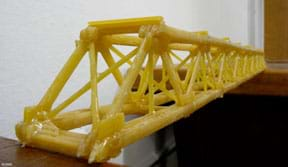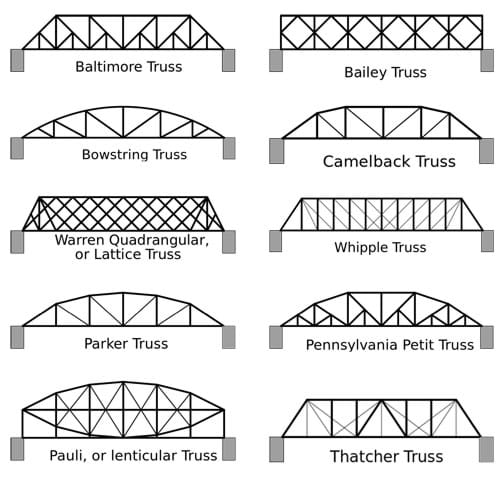Quick Look
Grade Level: Middle school
Time Required: 2 hours
Expendable Cost: US $1.00
Group Size: 3
Subject Areas: Science and Technology
Introduction
Bolded words are vocabulary and concepts to highlight with students during the activity.
Civil engineers design structures such as buildings, dams, highways, bridges, roller coasters, tunnels, skyscrapers, and sports arenas, among many others. It is important that the structures are soundly built so they are safe for people to use. Today, you will get a taste of what it is like to be an engineer by making bridges using dry spaghetti noodles as the primary building material. Then you will test your bridges to see how much weight they can hold before breaking.

Supplies
Each group needs:
- paper and pencils
- ~1 pound dry spaghetti (do not use thin spaghetti)
- hot glue gun and glue sticks
- ruler
- 1 sheet of newspaper
For the class to share:
- yardstick or tape measure
- 2-3 sheets of newspaper
- 2 desks or tables at equal heights from the floor
- weights (same-size textbooks work well)
Subscribe
Get the inside scoop on all things TeachEngineering such as new site features, curriculum updates, video releases, and more by signing up for our newsletter!Procedure
Overview
Students design and build bridges using uncooked spaghetti as the primary building material with the objective to maximize the amount of weight the bridge can hold. Then they test the bridges by applying weight until the bridge fails (breaks). Note: This activity can be extended to a 180-minute activity if students choose to make their bridges more intricate.
Procedure
- Show students the available building materials: spaghetti and hot glue.
- Explain the engineering challenge: To design and build a bridge that spans an 18-inch (46-cm) gap and can hold as much weight as possible (measured by textbooks, placed one at a time).
- Organize students into groups of three. Hand out paper and pencils.
- Explain the design requirements:
- Incorporate into their designs some sort of construction/assembly pattern that makes the bridge sides and bottoms stronger. To help generate ideas, show students the example truss bridge designs in Figure 1. Point out how the designs are made from short straight pieces put together in patterns that often include triangles.
- Make the bridges at least 18-inches long so they can rest on each side of the testing station gap.
- Have groups sketch their bridge ideas, including dimensions.
- While students are designing, set up a testing station in the classroom by placing two desks 18-inches (46-cm) apart. Lay newspaper on the floor between the gap to catch pasta debris. Also cover student work areas with newspaper sheets to catch hot glue drips.
- Have students get instructor approval of their sketches before they begin building.
- Give groups time to create their bridges. Suggest they bring them to the testing station to check the length. Carefully monitor hot glue use for safety.
- With 10-15 minutes left, have each group bring its bridge to the testing station. One by one, place books on the bridge until it collapses. On the classroom board, keep track of group names and failure weights.
- Lead a class discussion to compare the failure weights to the various bridge designs and ask the wrap-up questions.
- Clean up!

Figure 1. Example truss bridge designs.
Wrap Up - Thought Questions
- What worked well about your design? Why?
- What did not work well? Why not?
- What additional materials might be useful for constructing your bridge? How would you use them?
More Curriculum Like This

Los estudiantes diseñan, construyen y prueban puentes hechos de fideos de spaghetti crudos.
Copyright
© 2016 by Regents of the University of ColoradoLast modified: May 12, 2022







User Comments & Tips